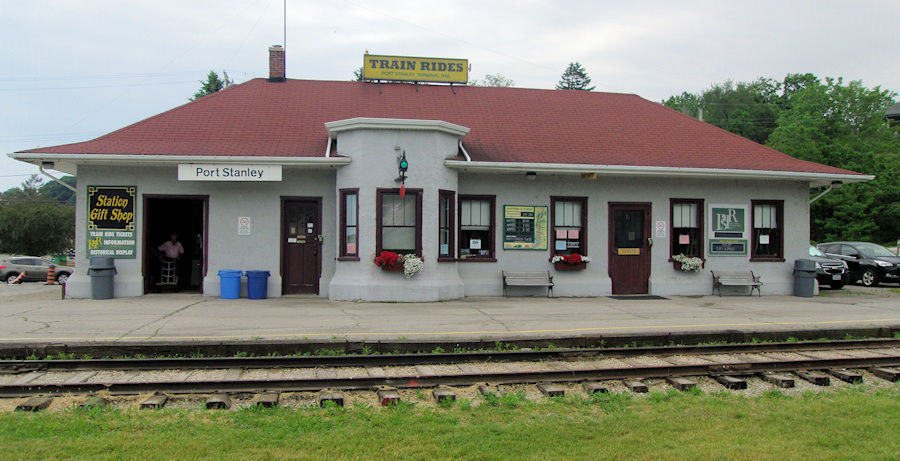
- This event has passed.
The L&PS Railway

Take a step back in time to learn about the London & Port Stanley Railway, the vital link that transformed Port Stanley into a thriving transportation link between harbour and land. Presenters will be Ben and Bradley Roberts, active volunteers with the Port Stanley Terminal Rail.
Here are the key points from Ben and Bradley Roberts’ presentation on the London and Port Stanley (L&PS) Railway:
- Speakers and Topic: The presentation was given by Ben Roberts (father) and Bradley Roberts (son) about the history of the L&PS railway. Bradley displayed photos while Ben spoke.
- Station Locations: Ben provided the exact location of White’s Station and specified that the station at the County Building was named Craft Station. The trains were very busy at both stations during the 1940s, serving the RCAF training station.
- Establishment and Duration: The L&PS started in 1853 by the London Railroad Company and ran until 1966 when it was bought out by CN.
- Construction: It took three years to lay the 24.6 miles of track. Laborers from Scotland and Ireland performed the work.
- First Run and Power: The first train ran on July 6, 1856, from the Richmond and Bathhurst Station in London to the Beach Station in Port Stanley. It was powered by diesel locomotives.
- Freight and Ferry Service: A freight terminal at the lake edge allowed freight cars to be loaded directly onto a ferry. Lumber from Canada was shipped to the USA, and coal was shipped from the USA to Canada.
- Passenger Experience: At the Beach Station, passengers could take the incline railway up to picnic hill for 5 cents. The incline railway cars are currently in St. Thomas at the Railway Museum, with a possible eventual return to Port Stanley.
- 1887 St. Thomas Accident: A severe accident in St. Thomas saw a freight train hit an L&PS passenger train, resulting in 27 fatalities. This led to the installation of a BX tower.
- BX Tower Restoration: The BX tower is still standing, though the CN tore out the tracks. After the key was recently found following the death of the last worker, Charlie Beckett, St. Thomas is planning to restore the tower as a tourist attraction.
- Zavitz Bridge: The Zavitz bridge, just north of Port Stanley, was unaffected when it was hit by a tornado in 1990; the tornado “just bounced off.”
- Electrification and Profitability: In 1913, Sir Adam Beck, Mayor of London, decided to electrify the L&PS, paid for by the city. This made the train highly profitable from the 1920s to the 1940s.
- Specialized Electric Cars: Special electric passenger cars were ordered, featuring Tiffany glass and being twice as long as regular cars. They had driving abilities at both ends, eliminating the need for a turntable. Even-numbered cars were powered, and odd-numbered cars were trailers.
- Post-War Decline: Freight service slowed after the war. Passenger tour trains began in 1956, but all regular passenger service stopped in 1957 due to the rise of car ownership.
- CN Takeover and Abandonment: Freight service continued until 1966 when CN bought the line and tore out all the electrical towers. CN continued to service the Ford plant and grain silos in Port Stanley. Train service was ultimately abandoned by CN in 1976 following a major washout north of Union.
- PSTR Revival: After five years of negotiations, the Port Stanley Terminal Rail (PSTR) purchased the section from St. Thomas to Port Stanley. Service, run entirely by volunteers, began in June 1984 from the Bridge Station to St. Thomas.
- PSTR Rolling Stock: The PSTR restored the old station and owns the original electric box cabs L1 and L5, along with several passenger cars, including the 1937 passenger car the meeting was held in.
Conclusion: David thanked Ben and Bradley for their presentation and gave them a donation for the PSTR for preserving Port Stanley’s history.
For the full minutes of the meeting, please click here: Meeting Minutes
